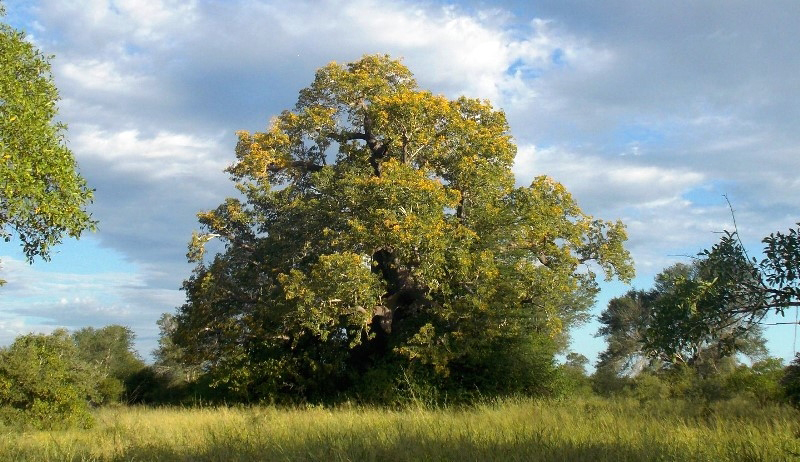A JOURNEY OF HOPE: SAVING 53 ELEPHANTS
In a dark time for elephants, this is a story of hope. Fifty-three South African elephants that were at risk of being culled were safely moved to a new expansive home in Mozambique’s Zinave National Park. Wild Tomorrow Fund was proud to be a part of this large collaborative project.
It’s not every day that you get to take part in an exercise to save Africa’s gentle giants. And it’s definitely not something you can do alone. Eight organizations, including Wild Tomorrow Fund, worked over 3 days across June and July to safely capture 53 elephants from two South African government reserves and move them to their new home in Mozambique’s Zinave National Park – a journey totaling 777 miles (1250 km) and spanning countries.
Dr. Dave Cooper locating the elephants from the air.
This elephant translocation, the largest in history for KwaZulu-Natal, South Africa, was a joint international effort. Conservation Solutions conducted the operation, Elephant, Rhino, People (ERP) primarily funded the move, iSimangaliso Wetland Park and Ezemvelo KZN Wildlife donated the elephants, manpower, and ground vehicles, Peace Parks Foundation and Mozambique government’s National Administration for Conservation Areas are responsible for offering the elephants a new safe home, and Wild Tomorrow Fund along with Elephant Cooperation funded the helicopter operations.
ELEPHANTS IN CRISIS
Across Africa elephant populations are in crisis. A staggering 30% were lost between 2007 and 2014, primarily to poaching. That’s 144,000 elephants in just seven years - approximately 100 every day. However, the struggle to save elephants differs from country to country. Mozambique lost 53% of its elephant population in five years to poachers, while in South Africa the conservation challenge for elephants is habitat loss, with elephants running out of space within finite, fenced reserves.
South African park managers are faced with limited options to manage the elephant populations that are contained within their reserves. The first option is contraception, used to slow breeding rates, but the long-term effects on fertility are not well understood and the process isn’t always effective. The second option is to increase the size of their habitat. This is done by connecting reserves via wildlife corridors or expanding existing reserves, but this takes time and large amounts of funding. If contraception and habitat increases are unsuccessful then only two options remain: relocating elephants to other reserves, or the tragic last resort - culling.
Ground crews arrive on the scene and begin to stabilize the elephants.
Wildlife veterinarian for Ezemvelo KZN Wildlife, Dr. Dave Cooper, who was the supervising vet for this historic translocation explains,
“Faced with an ever-increasing human population, habitat expansion and relocation within the borders of South Africa is in most cases out of the question and we are forced to look beyond our borders. Without the means to provide adequate protection, elephant populations have been decimated in many parts of Africa that previously were the home to many thousands of these iconic animals. It is ironic that South Africa with a proud history of conservation is now concerned with “too many” elephants and the time has come whereby we are in an ideal position to assist in the restoration of natural processes in the countries further to the North.”
This was the case at both uMkhuze and iThala reserves in South Africa. They donated 29 and 24 elephants respectively from their over-capacity reserves. iThala, an 86,487 acre (35,000 ha) reserve is home to 190 known elephants. This far exceeds its estimated carrying capacity. uMkhuze Reserve, managed by iSimangaliso Park, totals 111,197 acres (45,000 ha) and is in a similar situation with 200 known elephants.
The director of park operations at iSimangaliso Park, Mr. Sizo Sibiya, was particularly pleased to be a part of the elephant move,
“In 1994 when elephants were first introduced back into uMkhuze, I was working here as a young wildlife section ranger. Today is a great indication of the excellent job that Ezemvelo KZN Wildlife has been doing in protecting these animals over the past 23 years to the point where we are able to donate to other parks.”
Elephant Number 30 being moved onto the truck. Photo credit: iSimangaliso Wetland Park
The 777 mile (250 km), 3 country-wide, route travelled by the 53 elephants.
Returning elephants to a reserve where they had been poached out during Mozambique's civil war is a grave responsibility. Park managers had to ensure that the destination is now safe and adequately protected, that it is large enough for elephant numbers to increase, and that the habitat meets the biological, social, and ecological needs of elephants. Zinave National Park ticked all of these boxes, an expansive and well-protected area covering one million acres (408,000 ha).
In early 2016, the Peace Parks Foundation entered into a cooperative management agreement with the park, providing financial support, increased security, and resources to develop ecotourism and community conservancies at its edges. Peace Parks has already re-introduced more than 780 animals including impala, reedbuck, waterbuck, and buffalo. Their re-wilding strategy aims to relocate an additional 7,000 animals over the next five years.
The 53 elephants will join an already settled family group of 13 who have been at the park for just over a year. Initially, they will stay in a 45,962 acre (18,600 ha) fenced sanctuary section allowing them to learn their new environment and get to know each other while being protected by an additional 26 newly trained rangers, as part of Zinave's anti-poaching strategy.
Transferring elephants onto the truck.
Clinton Wright, Wild Tomorrow Fund’s senior ecologist explains: “At least now, these herds facing the possibility of being culled, will have ample space, water and food, and dedicated rangers to protect them.” And the good news gets better - this newly seeded elephant population is expected to double in size over the next 10 years!
Wildlife vet Dave Cooper recalls, “As a destination, Zinave in Mozambique ticks all the boxes and I have no doubt that the 53 elephants relocated in the last 2 weeks will thrive for many more years in circumstances without concerns of habitat degradation necessitating further human intervention such as contraception.”
Thank you to all the organizations that made this move possible and together guaranteed a wild future for these precious African elephants. We look forward to continuing this story with updates on their progress in their new home at Zinave National Park in Mozambique.
And a special thank you to Elephant Cooperation and those who attended our London fundraiser.
Zinave National Park, the elephants new home. Photo credit: Bernard van Lente






